
What is solid phase peptide synthesis?
Small Molecules and Synthetic Therapeutics
What is solid phase peptide synthesis and why was it developed? Read more to learn the differences between the two main synthesis ...

Small Molecules and Synthetic Therapeutics
What is solid phase peptide synthesis and why was it developed? Read more to learn the differences between the two main synthesis ...

Small Molecules and Synthetic Therapeutics
Predicting peptide elution profile is critical for efficient peptide purifications. Learn how a scouting column, with matched stationary ...

Small Molecules and Synthetic Therapeutics
Learn how to quickly and gently evaporate peptide cleavage cocktail, reducing your total peptide workflow time significantly.

Small Molecules and Synthetic Therapeutics
Methanol is increasingly used for reversed phase purification in place of acetonitrile. Learn how methanol impacts your peptide ...

Small Molecules and Synthetic Therapeutics
Cleaving peptides from resin is often a very fast reaction, however side chain protecting groups may require more time. What reaction time ...
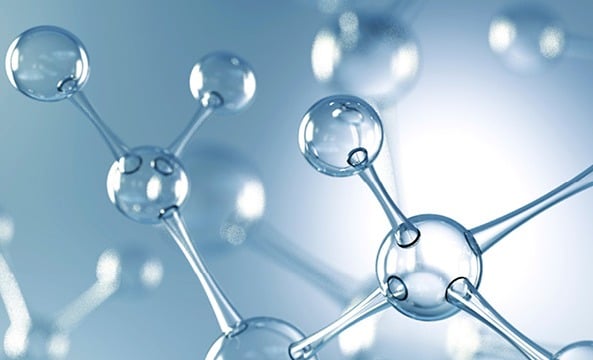
Small Molecules and Synthetic Therapeutics
Reversed phase flash chromatography is growing in popularity as a strategy to purify crude peptide samples. Read more to how gradient ...

Small Molecules and Synthetic Therapeutics
Step gradients are often used in normal phase chromatography. Read more to learn how they can be used to also improve the purity of your ...

Small Molecules and Synthetic Therapeutics
Peptide purification with flash chromatography can be hampered by resolution losses. Read more to learn how a focused gradient can improve ...

Small Molecules and Synthetic Therapeutics
Ionization efficiency is critical for effective mass directed purification of peptides. Read more to learn how the carrier solvent impacts ...

Small Molecules and Synthetic Therapeutics
Resin choice is critical to ensure a successful peptide synthesis. Learn how swelling capacity and general hydrophilicity can help improve ...

Small Molecules and Synthetic Therapeutics
Resin choice can play a large role in successful peptide synthesis. Learn more about how resin substitution levels can impact your ...

Small Molecules and Synthetic Therapeutics
Double coupling costs not only time, but also extra reagents. Is it really necessary though? Read more to find out!

Small Molecules and Synthetic Therapeutics
Read about my first time trying out reversed phase flash chromatography for purifying my peptides. Spoiler alert: it works!

Small Molecules and Synthetic Therapeutics
Have you ever used a longer HPLC column to improve your separation? Read more to find out if this is a good strategy for flash ...

Small Molecules and Synthetic Therapeutics
Sometimes crude peptides are so dirty they require 2 purification passes. Read more to learn how connecting two different columns can ...

Small Molecules and Synthetic Therapeutics
It's clear that cyclizing peptides can, not only increase proteolytic stability, but may also increase cell permeability. As a result, ...

Small Molecules and Synthetic Therapeutics
Flash chromatography is often disregarded for peptide purification given its lower resolution. Read more to learn how alternative ...

Small Molecules and Synthetic Therapeutics
Learn about an optimized protocol for automated synthesis and ivDde protecting group removal using the Initiator+ Alstra™ peptide ...

Small Molecules and Synthetic Therapeutics
Comparing conditions to expdite the selective removal of ally or alloc ester protecting groups using microwave heating.

Small Molecules and Synthetic Therapeutics
When synthesizing peptides that contain multiple disulfide bonds you may consider the order in which those bonds are formed.

Small Molecules and Synthetic Therapeutics
Compare conditions for the selective removal of ally or alloc ester protecting groups at room temperature. Is it suitable for automation?

Small Molecules and Synthetic Therapeutics
Ring-closing metathesis has gained a lot of attention for use in peptide stapling strategies. Read more to learn how microwave heating can ...

Small Molecules and Synthetic Therapeutics
Ensuring the complete removal of an orthogonal protecting group is the first step in optimizing on-resin secondary chemistry.

Small Molecules and Synthetic Therapeutics
Orthogonal protecting groups enable additional chemistry while peptides remain on the resin. Read more to learn how to remove Acm ...

Small Molecules and Synthetic Therapeutics
Concentration impacts the efficiency of a chemical reaction. Learn how increasing your amino acid concentration can improve your crude ...

Small Molecules and Synthetic Therapeutics
Read more for a short list of helpful tips and tricks to improve your peptide synthesis yield and purity.

Small Molecules and Synthetic Therapeutics
Synthetic peptides are often purified using RP-HPLC. Read more to learn how RP-flash chromatography could serve as an alternative.

Small Molecules and Synthetic Therapeutics
Bringing peptide synthesis in-house requires some careful consideration. Read more to get a glimpse of what you'll need to get started.

Small Molecules and Synthetic Therapeutics
There are many different types of mass spetrometers and ionization methods. Read more to learn about strategies useful for analyzing ...
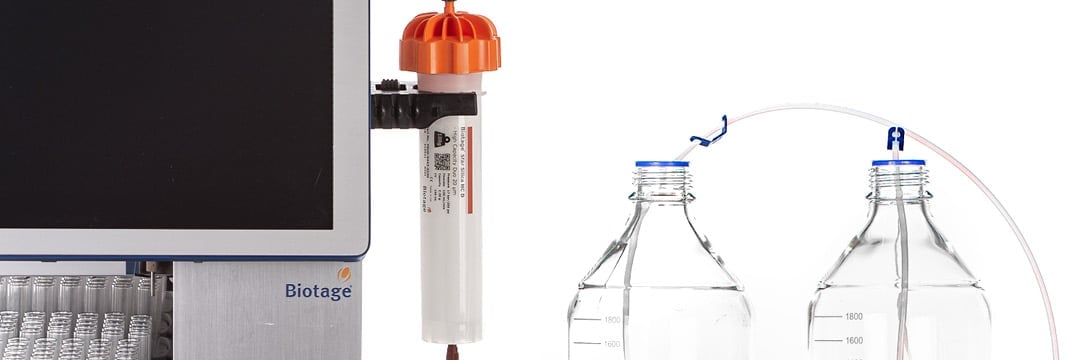
Small Molecules and Synthetic Therapeutics
The article describes the impact of introducing the Biotage Flash Chromatography into a university laboratory.

Small Molecules and Synthetic Therapeutics
This post discusses preparation and use of flash chromatography dry loading.

Small Molecules and Synthetic Therapeutics
This post shows the utility of using a polar bonded phase (propyl NH2) to purify a mixture of polar compounds using water and acetonitrile.
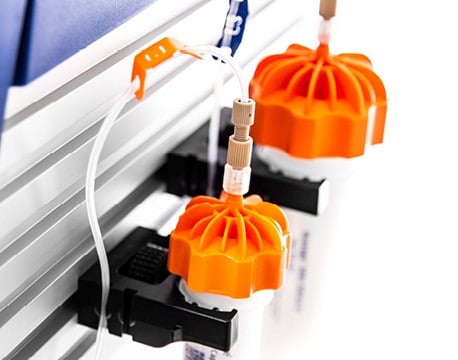
Small Molecules and Synthetic Therapeutics
This post discusses options to address the issue of a 2-solvent gradient not separating a samples components.

Small Molecules and Synthetic Therapeutics
This post shows how using a fiber optic UV detector enhances sensitivity for poor UV absorbing compounds.

Small Molecules and Synthetic Therapeutics
This post describes some beneficial techniques for modifying flash chromatography methods to separate chemically similar compounds.

Small Molecules and Synthetic Therapeutics
This post discusses the benefits possible by increasing normal-phase solvent pH.

Small Molecules and Synthetic Therapeutics
This article describes how to scale up the chromatography process.

Small Molecules and Synthetic Therapeutics
This post describes how to remove an interfering TIC or Total Ion Current background response.

Small Molecules and Synthetic Therapeutics
This post discusses how and when to insert a gradient hold.

Small Molecules and Synthetic Therapeutics
This post discusses the importance of using TLC plates with silica that matches that of the flash chromatography column.

Small Molecules and Synthetic Therapeutics
Read more about how these two Ph.D. students are using their Biotage Selekt system in Polymer Material Research and how it impacts their ...

Small Molecules and Synthetic Therapeutics
Choosing a reliable manufacturer for lab instruments is very important and has an impact both on the quality of the final products and in ...

Small Molecules and Synthetic Therapeutics
Microwave reaction tutorial.

Small Molecules and Synthetic Therapeutics
This post describes how the choice of a reaction solvent can influence its outcome.

Small Molecules and Synthetic Therapeutics
This post discusses the benefits provided by PDA-UV detector for determining peak purity.

Small Molecules and Synthetic Therapeutics
This post discusses the reversed-phase purification of highly lipohilic compounds using high organic content mobile phases.

Small Molecules and Synthetic Therapeutics
The stationary phase properties directly impacts your purification. Read more to learn about using large-pored particles for improved ...

Small Molecules and Synthetic Therapeutics
This post discussed the impact of media pore size on small-molecule flash column chromatography.

Small Molecules and Synthetic Therapeutics
This posts describes tips to improve reversed-phase method development.

Small Molecules and Synthetic Therapeutics
When should I add acid to my detector make-up solvent when using mass-directed flash chromatography?

Small Molecules and Synthetic Therapeutics
This post discusses the benefits of spending only 10 minutes developing TLC data to support optimized flash chromatography.

Small Molecules and Synthetic Therapeutics
Does high performance flash column chromatography require high performance TLC for method development?

Small Molecules and Synthetic Therapeutics
Does mass detection make-up solvent choice matter?

Small Molecules and Synthetic Therapeutics
This post discusses the best options for creating and transferring HPLC-based methods to flash chromatography.

Small Molecules and Synthetic Therapeutics
This post discusses the benefits of acetone over ethyl acetate in normal-phase flash chromatography.

Small Molecules and Synthetic Therapeutics
Using pH to optimize reversed-phase flash chromatography separations.

Small Molecules and Synthetic Therapeutics
This post describes the benefits of in-line mass detection to find the undetectable compounds when using flash chromatography.

Small Molecules and Synthetic Therapeutics
This post discusses how to use adducts and fragments to identify compounds in mass-directed flash chromatography.

Small Molecules and Synthetic Therapeutics
This post describes the impact buffers and acids have on APCI mass detection.

Small Molecules and Synthetic Therapeutics
The clip shows the long history in Biotage column chromatography.

Small Molecules and Synthetic Therapeutics
When dry loading with flash chromatography, the sorbent choice can impact compound purification effectiveness.

Small Molecules and Synthetic Therapeutics
Step gradient flash chromatography improves loading capacity, while reducing solvent use and overall purification time.

Small Molecules and Synthetic Therapeutics
Green flash chromatography is achievable and inexpensive. Using columns packed with small, high surface area silica is the simplest way to ...

Small Molecules and Synthetic Therapeutics
Diatomaceous earth is an excellent media for dry loading in both normal- and reversed-phase flash chromatography.

Small Molecules and Synthetic Therapeutics
Dry loading can give better results in chromatography sometimes compared to liquid loading. Read more!

Small Molecules and Synthetic Therapeutics
This article discusses the impact of introducing the Biotage Organic Workflow into a university laboratory via an interview with Director ...

Small Molecules and Synthetic Therapeutics
Sometimes during flash chromatography the system will overpressure due to a flow blockage. This post provides some tips to prevent this ...

Small Molecules and Synthetic Therapeutics
This blog will help you understand dry loading, a sample loading technique that uses a blend of reaction mix/extract and sorbent.

Small Molecules and Synthetic Therapeutics
This is a basic overview of what flash chromatography is and why it is useful to chemists.

Small Molecules and Synthetic Therapeutics
Flash column equilibration is important to ensure a proper separation occurs. This post discusses the impact of flow rate and equilibration ...

Small Molecules and Synthetic Therapeutics
This post discusses the differences between RP flash and prep HPLC for compound purification.

Small Molecules and Synthetic Therapeutics
How do I purify my high boiling solvent reaction mixture using silica flash chromatography?

Small Molecules and Synthetic Therapeutics
This post discusses options to separate and purify compounds by flash chromatography when TLC conditions have not successfully worked.

Small Molecules and Synthetic Therapeutics
This post discusses the role that the organic solvent plays in reversed-phase separation performance.

Small Molecules and Synthetic Therapeutics
This post shows the benefits achievable when various solvents from different selectivity groups are used for method development using TLC.

Small Molecules and Synthetic Therapeutics
This post discusses the criterial for determining when to replace a used C18 column.

Small Molecules and Synthetic Therapeutics
This post shows the benefits obtained by purifying a reaction mixture using both normal- and reversed-phase flash chromatography.

Small Molecules and Synthetic Therapeutics
Learn more from our in-house service expert about how to create your own Flash Chromatography Test Mix for your flash system!

Small Molecules and Synthetic Therapeutics
This post describes some troubleshooting and remedies for sample blowback after a liquid injection with a syringe.

Small Molecules and Synthetic Therapeutics
This post describes options available to remove contamination from both synthetic and natural products.

Small Molecules and Synthetic Therapeutics
This post discusses the challenges chemists can face when reusing silica columns.

Small Molecules and Synthetic Therapeutics
This post discusses the challenges of re-using silica columns.

Small Molecules and Synthetic Therapeutics
This post discusses some of the reasons a UV baseline might change during flash column chromatography.

Small Molecules and Synthetic Therapeutics
This post shows the impact on UV sensitivity that chromatographic solvents have.

Small Molecules and Synthetic Therapeutics
This post looks at the impact of solvent UV absorptivity on compound detection sensitivity.

Small Molecules and Synthetic Therapeutics
This post discusses the impact of acid concentration on flash chromatography.

Small Molecules and Synthetic Therapeutics
This post discusses what a step gradient is and is benefits to chemists performing flash chromatography.

Small Molecules and Synthetic Therapeutics
This post shows the impact of gradient slope on purification results.

Small Molecules and Synthetic Therapeutics
This post discusses the impact that flow rate has on separation efficiency.
Small Molecules and Synthetic Therapeutics
This post discusses the impact of a flash system's internal plumbing volume on gradient purification.

Small Molecules and Synthetic Therapeutics
This post describes some methodology on selecting normal-phase solvents for flash chromatography.

Small Molecules and Synthetic Therapeutics
This post discusses the benefits of gradient elution vs. isocratic elution.

Small Molecules and Synthetic Therapeutics
This post describes what a gradient is and how one will impact chromatographic results.

Small Molecules and Synthetic Therapeutics
This post discusses the impact that injection volume has on purification results.

Small Molecules and Synthetic Therapeutics
This post describes some benefits an acidified mobile phase provides.

Small Molecules and Synthetic Therapeutics
Can reversed-phase flash column chromatography be greener?

Small Molecules and Synthetic Therapeutics
This post discusses the steps that can be taken to increase reversed-phase flash column life.

Small Molecules and Synthetic Therapeutics
This post compares the cost differences between reversed-phase and normal-phase flash chromatography.

Small Molecules and Synthetic Therapeutics
This post discusses the efficiency of low temperature evaporation of solvents with boiling points 100 C and higher.

Small Molecules and Synthetic Therapeutics
This post discusses the impact of column equilibration volume of chromatography results.

Small Molecules and Synthetic Therapeutics
This post discusses the impact of that sample solvent on the loading capacity of a reversed-phase flash column.

Small Molecules and Synthetic Therapeutics
This post discusses the benefits obtainable using dry loading vs. liquid loading.

Small Molecules and Synthetic Therapeutics
This post discusses whether a single or multiple fractionation wavelengths generate higher purity in greater amounts.

Small Molecules and Synthetic Therapeutics
This post discusses the benefits achievable when using a “high-performance" flash chromatography column.

Small Molecules and Synthetic Therapeutics
This post compares TLC-based gradients to a generic linear gradient to highlight the benefits TLC provides.

Small Molecules and Synthetic Therapeutics
This post discusses how ionizable compounds can be purified using reversed-phase flash column chromatography.

Small Molecules and Synthetic Therapeutics
This post discusses the relationship between column length and column diameter and their impact of chromatographic separations.

Small Molecules and Synthetic Therapeutics
This post discusses the 5 most important steps to successful flash chromatography.

Small Molecules and Synthetic Therapeutics
This blog describes the impact of particle size and flow on the loading capacity of a flash chromatography column.

Small Molecules and Synthetic Therapeutics
This post discussed the reasons TLC Rf values are important for flash column chromatography optimization.

Small Molecules and Synthetic Therapeutics
The post discusses the reasons dry silica columns get hot when solvent is introduced and the impact the generated heat has on the resulting ...

Small Molecules and Synthetic Therapeutics
How does solvent choice impact flash column chromatography performance?

Small Molecules and Synthetic Therapeutics
When your purification needs require both normal- and reversed-phase flash, switching solvents is required. Here we show an automated ...

Small Molecules and Synthetic Therapeutics
This post show a simple way to scale-up reversed-phase flash purification methods.

Small Molecules and Synthetic Therapeutics
How do I determine loading capacity in reverse phase flash column chromatography?

Small Molecules and Synthetic Therapeutics
This post helps guide the reader to choose either reversed-phase or normal-phase based on mixture solubility.

Small Molecules and Synthetic Therapeutics
This post provides 5 tips on extending reversed-phase flash chromatography cartridge life.

Small Molecules and Synthetic Therapeutics
This post discusses the principles behind evaporative light-scattering detection (ELSD).

Small Molecules and Synthetic Therapeutics
This post talks about ways to increase sample load.

Small Molecules and Synthetic Therapeutics
This post shows how highly polar compounds can be retained and separated with using expensive "aqueous" reversed-phase columns.

Small Molecules and Synthetic Therapeutics
So, which detector should I use for flash column chromatography?

Small Molecules and Synthetic Therapeutics
Can flash column chromatography be green?

Small Molecules and Synthetic Therapeutics
This post discusses the impact that different sample solvents have on reversed-phase flash chromatography.

Small Molecules and Synthetic Therapeutics
This post answers the question - Does methanol really dissolve silica during flash column chromatography?

Small Molecules and Synthetic Therapeutics
Benefits of acetonitrile over methanol in normal-phase flash column chromatography.

Small Molecules and Synthetic Therapeutics
Detecting the undetectable in flash column chromatography.

Small Molecules and Synthetic Therapeutics
This post discusses when to use an APCI or ESI for my flash column chromatography mass detection?

Small Molecules and Synthetic Therapeutics
This post discusses the benefits of adjusting mobile phase pH in flash column chromatography gradient?

Small Molecules and Synthetic Therapeutics
This post discusses some options to reduce compound precipitation during chromatography.


Small Molecules and Synthetic Therapeutics
This post looks at the benefits column equilibration provides and the consequences of not equilibrating.

Small Molecules and Synthetic Therapeutics
See how the Sfär columns impacted Dr. Alfredo Picado's research at UNC-CH with the SGC.

Small Molecules and Synthetic Therapeutics
Find out the impact the Selekt Flash Chromatography System has had on the students at California State University at San Marcos.

Small Molecules and Synthetic Therapeutics
How to run a quick equilibration process and save time and solvent by utilizing Biotage Selekt and Biotage Sfär for your daily flash column ...

Small Molecules and Synthetic Therapeutics
This post discusses the reasons chromatographic peaks appear to be split and some solutions to the problem.

Small Molecules and Synthetic Therapeutics
This post discusses the causes of and remedies for peaks which appear as doublets.

Small Molecules and Synthetic Therapeutics
The ratio of crude sample to dry load sorbent influences how well your flash purification works.

Small Molecules and Synthetic Therapeutics
This video shows some strategies that could be adopted to be in control of flash purification.

Small Molecules and Synthetic Therapeutics
Setting the Right Flow Rate for Flash Column Chromatography.

Small Molecules and Synthetic Therapeutics
Learn about six key factors that impact flash chromatography.

Small Molecules and Synthetic Therapeutics
How important is your flash column’s plate count, aka efficiency, to your purification?

Small Molecules and Synthetic Therapeutics
How do I Choose the Right Column Size for Purification by Flash Chromatography?

Small Molecules and Synthetic Therapeutics
This post compares purification performance of long/thin columns with short/fat column.

Small Molecules and Synthetic Therapeutics
This post discusses to role that both particle size and particle surface are have in improving a column's loading capacity.

Small Molecules and Synthetic Therapeutics
Flash chromatography should be fast (hence flash). Here we explore some simple options to speed flash chromatography without sacrificing ...

Small Molecules and Synthetic Therapeutics
Good organic synthesis requires thought and planning which, hopefully, results in a new, unique, and valuable product in a mixture needing ...

Small Molecules and Synthetic Therapeutics
This instructions help to configure Isolera with Sfär columns.

Small Molecules and Synthetic Therapeutics
Watch Bob Bickler's webinar on how to be successful in flash chromatography featuring the Selekt and Sfär columns!

Small Molecules and Synthetic Therapeutics
In this blog post, you'll learn how with flash-ms you can isolate specific, targeted compounds based on their molecular mass which will ...

Small Molecules and Synthetic Therapeutics
Get more time for creative chemistry - apply your knowledge and the right flash column chromatography system to deliver consistent results ...

Small Molecules and Synthetic Therapeutics
Flash column chromatography using an automated chromatography system can help boost productivity and reduce solvent use in pharmaceutical ...

Small Molecules and Synthetic Therapeutics
Save time with pain-free purification using automated flash chromatography and enjoy spending more time on researching new chemistries.

Small Molecules and Synthetic Therapeutics
Control, flexibility, and reliability of automated flash column chromatography systems are key in freeing up time to enjoy researching new ...

Small Molecules and Synthetic Therapeutics
Partnering with reliable vendors helps in achieving predictable and excellent flash purification outcomes to support the needs of discovery ...

Small Molecules and Synthetic Therapeutics
A key factor in the design-make-test-analyze (DMTA) cycle of pharmaceutical research is access to reliable purification systems from ...

Small Molecules and Synthetic Therapeutics
Providing drug discovery chemists with tools such as automated flash chromatography is key to confident delivery of target compounds in a ...

Small Molecules and Synthetic Therapeutics
A new complete portfolio of columns, they all contain spherical silica and high surface area that allows a higher loading capacity and ...

Small Molecules and Synthetic Therapeutics
A new instrument is made available to provide organic and peptide chemists with tools to make flash chromatography more efficient, faster ...

Small Molecules and Synthetic Therapeutics
Combining knowledge and Selekt flash column chromatography system boosts productivity by enabling alternative solvents and quick changes ...

Small Molecules and Synthetic Therapeutics
Increase productivity in pharmaceutical research with creative ways including using flash column chromatography, better work up, and ...

Small Molecules and Synthetic Therapeutics
Using intelligent automated flash chromatography systems that build on your experience will help you stay on target in your pharmaceutical ...

Small Molecules and Synthetic Therapeutics
Flash column chromatography can help you isolate target compounds with required purity and yield and progress with confidence to the next ...

Small Molecules and Synthetic Therapeutics
Using intelligent automated flash column chromatography systems saves time and puts you back in control of the synthesis process in ...

Small Molecules and Synthetic Therapeutics
Chemical purification can potentially be damaging to the environment, which means that drug discovery currently has a large and expensive ...
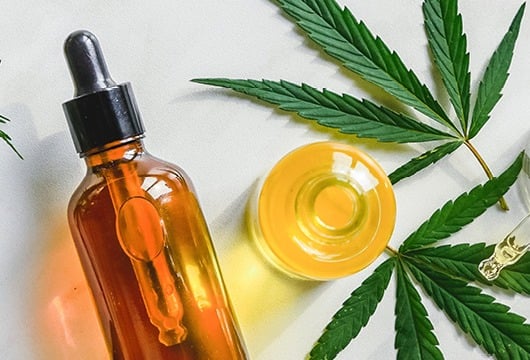
Small Molecules and Synthetic Therapeutics
Anyone thinking of producing CBD / THC needs to be able to carry out key processing steps. This article highlights the key processing ...
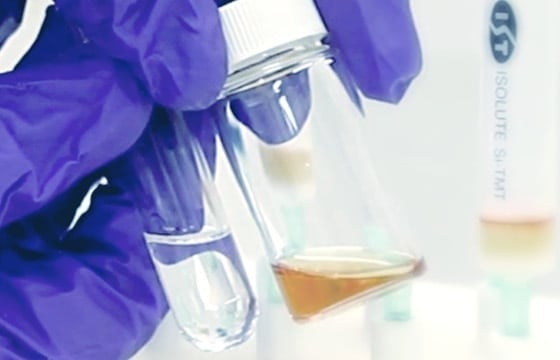
Small Molecules and Synthetic Therapeutics
This blog post will discuss how metal scavengers can be an alternative to recrystallization for removing metals.

Small Molecules and Synthetic Therapeutics
This blog post covers the best place to implement metal scavenging in a chemistry workflow for a product that is at risk of containing ...

Small Molecules and Synthetic Therapeutics
This blog post will discuss if we really need to heat metal scavengers when removing metals from products.

Small Molecules and Synthetic Therapeutics
This blog post explains why palladium metal scavengers are not all the same.
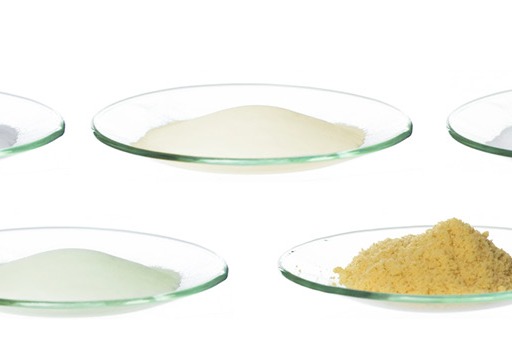
Small Molecules and Synthetic Therapeutics
Blog on how to implement metal scavenging, such as removal of palladium from an intermediate or API and build compliance with ICHQ3D into a ...

Small Molecules and Synthetic Therapeutics
Learn how to implement metal scavenging, such as removal of palladium from an intermediate or API and build compliance with ICHQ3D into a ...

Small Molecules and Synthetic Therapeutics
How to implement metal scavenging, such as removal of palladium from an intermediate or API and build compliance with ICHQ3D into a process.

Small Molecules and Synthetic Therapeutics
This guide explains what metal scavengers are and shows how to use the gold standard Biotage MP-TMT in the removal of palladium from API / ...

Small Molecules and Synthetic Therapeutics
Research showing palladium makes it way to final products from medchem routes and this interferes with biological screens. Biotage® Si-TMT ...

Small Molecules and Synthetic Therapeutics
Research showing palladium makes it way to final products from medchem routes and this interferes with biological screens. Biotage® Si-TMT ...

Small Molecules and Synthetic Therapeutics
A look at why activated carbon may not be best for removing metals. Using Biotage® Si-Thiol, we did not lose yield, the reaction was easy ...

Small Molecules and Synthetic Therapeutics
This blog post discusses why we should be wary of alternatives to the original, trusted Biotage ISOUTE® Si-Thiol metal scavenger.

Small Molecules and Synthetic Therapeutics
This post explains why reversed-phase TLC is not the best choice for reversed-phase flash method development.

Small Molecules and Synthetic Therapeutics
How do I develop a reversed-phase flash column chromatography method?

Small Molecules and Synthetic Therapeutics
Detecting the undetectable in flash column chromatography using wavelength focusing.

Small Molecules and Synthetic Therapeutics
This post discusses possible purification options of lipid nanoparticles (LNP).
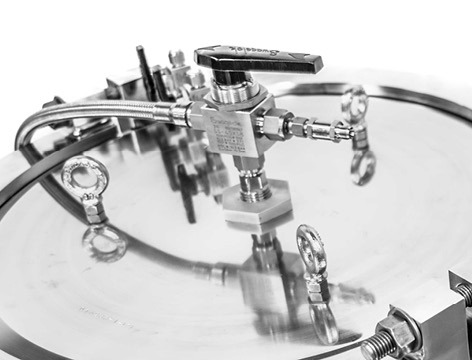
Small Molecules and Synthetic Therapeutics
Scaling up reversed Phase Flash Purification.

Small Molecules and Synthetic Therapeutics
Scaling-up flash purification – as easy as 1, 2, 3, 4.

Small Molecules and Synthetic Therapeutics
An introduction to the topic of scaling up flash purification.

Small Molecules and Synthetic Therapeutics
Scaling-up purification is key to unleashing production and opening doors to the vast therapeutic potentials of drug discovery programs for ...

Small Molecules and Synthetic Therapeutics
This is a case study for the adoption of Biotage Flash 400 for API purification in a custom process workflow at CordenPharma in Switzerland.

Small Molecules and Synthetic Therapeutics
This case study highlights a collaboration between Croda and Biotage in a project aimed at improving supply of lipids for the global fight ...

Small Molecules and Synthetic Therapeutics
Learn how to make flash chromatography green by reducing column size and using smart features on flash chromatography instrument.

Small Molecules and Synthetic Therapeutics
Chromatographic purification methods such as flash chromatography can have a high environmental impact from using toxic solvents. Here are ...

Small Molecules and Synthetic Therapeutics
Part 1 of a series for remediating CBD / THC from cannabis for medicinal applications, looking at the science, manufacturing and economics ...

Small Molecules and Synthetic Therapeutics
Understanding how cannabinnoids and THC work in the body greatly assists medical applications and therapeutic areas and is of paramount ...

Small Molecules and Synthetic Therapeutics
We investigate the “hot” topic of pesticide elimination from extract. Specifically – Myclobutanil remediation.

Small Molecules and Synthetic Therapeutics
This post discusses a chromatographic method to remove water from reversed-phase purified cannabinoids.

Small Molecules and Synthetic Therapeutics
Our final article shows how to put it all together, combining science, manufacturing and processing steps for a competitive advantage and ...

Small Molecules and Synthetic Therapeutics
This post describes a method for CBDA purification via flash chromatography.

Small Molecules and Synthetic Therapeutics
This post introduces the reader to a CBG purification application note.

Small Molecules and Synthetic Therapeutics
This post provides information on CBN purification.

Small Molecules and Synthetic Therapeutics
Isolation of minor cannabinoids from hemp is becoming more important to processors. This post discusses a flash chromatography method ...

Small Molecules and Synthetic Therapeutics
This post discusses the potential PDA UV has to identify individual cannabinoids.

Small Molecules and Synthetic Therapeutics
This post describes a purification method for the minor cannabinoid cannabicitran.

Small Molecules and Synthetic Therapeutics
This post discusses the benefits of dry loading over liquid loading.

Small Molecules and Synthetic Therapeutics
This post discusses which sample solvents work best with normal-phase flash column chromatography.

Small Molecules and Synthetic Therapeutics
This post shows the benefits of using proper sample/sorbent ratios in dry loading.

Small Molecules and Synthetic Therapeutics
This post discusses when amine-bonded columns should be used for compound purification.

Small Molecules and Synthetic Therapeutics
This post discusses the differences between linear gradients and step gradients for flash chromatography.

Small Molecules and Synthetic Therapeutics
Sample loading techniques, whether liquid or dry, greatly influence purification results.

Small Molecules and Synthetic Therapeutics
This post talks about the chemical interactions that take place in order to selectively separate compounds from each other.

Small Molecules and Synthetic Therapeutics
This post provides some guidelines on choosing between flash chromatography techniques.

Small Molecules and Synthetic Therapeutics
This post discusses an alternative purification approach using a amine-functionalized silica.

Small Molecules and Synthetic Therapeutics
This post discusses the use of both normal- and reverse-phase flash chromatography to purity polar cannabinoids such as CBG from hemp.

Small Molecules and Synthetic Therapeutics
This post discusses the benefits of using TLC to scout various flash chromatography solvents.

Small Molecules and Synthetic Therapeutics
This post describes a flash chromatographic method for the purification of CBN from a crude reaction mixture.

Small Molecules and Synthetic Therapeutics
This post discusses how CBC can be purified from a hemp extract using flash chromatography.

Small Molecules and Synthetic Therapeutics
There will be times when standard silica normal-phase flash chromatography just will not work. When this happens, explore reversed-phase.

Small Molecules and Synthetic Therapeutics
This post defines what a column volume is and how it is determined. Knowing a column's volume helps with flash method creation.

Small Molecules and Synthetic Therapeutics
Flash chromatography is an effective technique for purifying CBD, CBG, THC, and other cannabinoids.
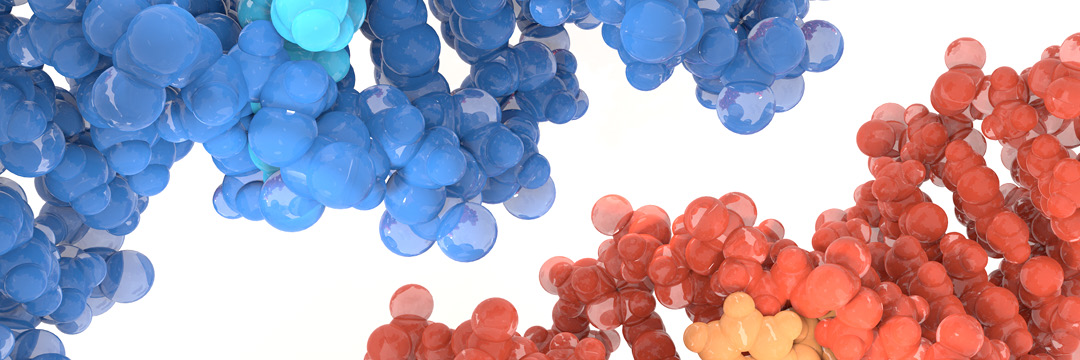
Biologics and Advanced Therapeutics
Comparison between bioreactors for the production of a conjugated antibody protein. Expression analysis shows distinctive differences ...

Biologics and Advanced Therapeutics
Semi-automated small-scale purification high throughput expression analysis of recombinant proteins "high-throughput protein production and ...

Biologics and Advanced Therapeutics
Dual flow chromatography - protein purification in a pipette tip.

Biologics and Advanced Therapeutics
Immunoprecipitation is usually carried out with magnetic beads or loose resin in a test tube. It is also possible to do small-scale IP by ...
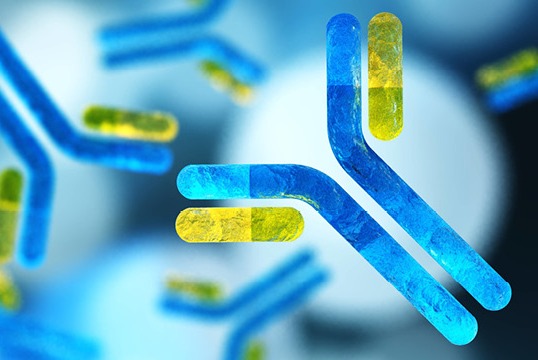
Biologics and Advanced Therapeutics
Overview of automated protein purification protocols for improved productivity are becoming more common in the biopharmaceutical and ...

Biologics and Advanced Therapeutics
Grasping the structure of monoclonal antibodies is essential to select the appropriate chromatography media for affinity purification of ...

Biologics and Advanced Therapeutics
As therapeutic use of antibodies for cancer increases the need for high throughput antibody purification is vital in drug discovery and ...

Biologics and Advanced Therapeutics
Learn more about the effects of pore size on the purification of proteins during C18 reversed phase chromatography.
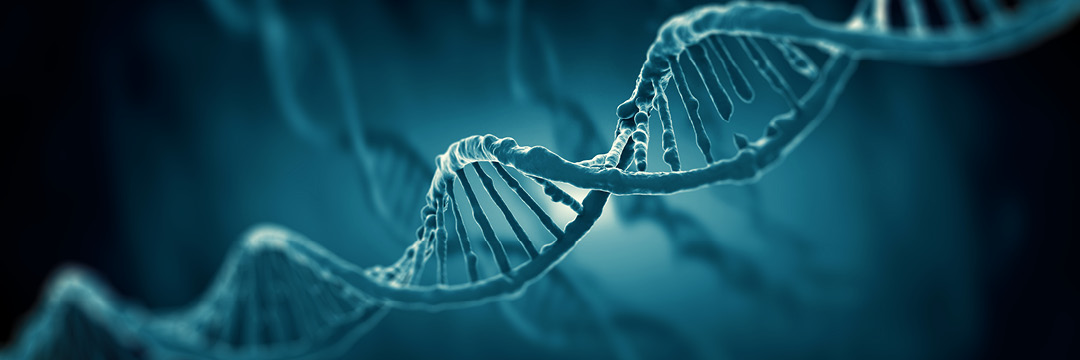
Biologics and Advanced Therapeutics
An automated workflow for MiniPrep plasmid purification in a drug discovery setting.

Biologics and Advanced Therapeutics
Plasmid purification technology has remained unchanged for over 40 years. With the introduction of the automated PhyPrep system this is ...

Biologics and Advanced Therapeutics
Learn how to grow large cultures for automated plasmid purification.
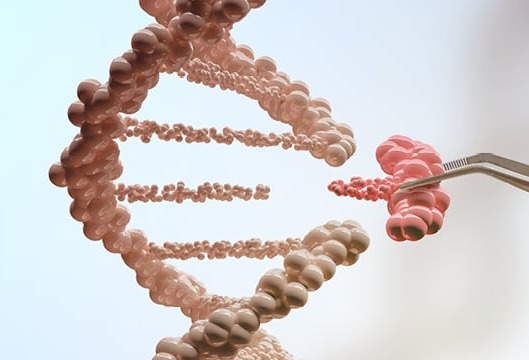
Biologics and Advanced Therapeutics
Learn more about what qualifies plasmid DNA as transfection grade and how you can be sure your plasmids are optimized for transfection.

Biologics and Advanced Therapeutics
Read the full article on how Astellas Gene Therapies automated their plasmid purification!

Biologics and Advanced Therapeutics
Learn more about how to check the quality of your plasmid DNA.

Biologics and Advanced Therapeutics
Learn more about plasmid purification.

Water and Environmental Testing
When using the ISOLUTE® Sodium Sulfate Cartridges in-line with the Biotage Horizon 3100 they make a difference in streamlining the SPE ...

Water and Environmental Testing
Solid phase extraction (SPE) is a powerful sample prep tool to extract semi-volatile organic compounds with varying physical and chemical ...

Water and Environmental Testing
The air-dry step is an important step within SPE and must be done properly. Read our blog post on how to avoid an improperly dried SPE ...

Water and Environmental Testing
When used for sample prep, SPE can be used for a wide range of samples.

Water and Environmental Testing
Bisphenol A (BPA) is one of the most widely produced chemicals in the world and has been found to produce negative hormonal effects within ...

Water and Environmental Testing
In a list of chemical pollutants, a compound gaining attention is 1,4-dioxane.

Clinical, Forensic and Doping Testing
The key to selecting the right media is to understand the chemistry behind what you’re trying to achieve.

Water and Environmental Testing
In the world of solid phase extraction (SPE), the list of media that is available seems to be ever-growing.

Water and Environmental Testing
Tea is a source of antioxidants called polyphenols. One of these polyphenolic compounds, catechins are found in green tea.

Water and Environmental Testing
EPA Method 8270 is one of the 8000 series methods that outlines the preparation of wastewater samples. Such a complicated method generates ...

Water and Environmental Testing
EPA Method 8270 is for analysis of solid, non-drinking water, drinking water and/or wipe samples containing select semi-volatile organic ...

Water and Environmental Testing
Solid phase extraction is a great technique for separating many of these contaminants from water samples.

Water and Environmental Testing
Tired of shaking liquid-liquid extractions (LLE), want to move to a technique that is less labor-intensive, solid phase extraction may be ...

Water and Environmental Testing
Have you extracted samples for oil and grease compounds using so SPE and thought, why do I have to use all these solvents, read our blog ...

Water and Environmental Testing
If you’re processing samples for oil and grease, see what your options are for extraction. Can you use cyclohexane as a safer alternative ...

Water and Environmental Testing
If your EPA Method permits you to choose your drying technique, then think about your options, just make sure all your QC requirements are ...

Water and Environmental Testing
EPA Method 1664B seems pretty straightforward, use n-hexane to extract compounds (commonly referred to as “oil and grease”) from an ...

Water and Environmental Testing
The key to working safely with methylene chloride – or any solvent, for that matter – is knowing how to be safe around it.

Clinical, Forensic and Doping Testing
Preventative maintenance is one of the most important tasks to be done in a laboratory, particularly when a lab is full of instruments.

Water and Environmental Testing
1,4 dioxane – sometimes referred to as just dioxane was added to the UCMR 3 list and is now a regulated, routinely monitored contaminant.

Water and Environmental Testing
Is your water safe to drink? To properly monitor and document the health risk, water samples must be collected, extracted, separated and ...

Water and Environmental Testing
In honor of World Water Day, I challenge you to use significantly less water on March 22, than you use on a regular basis.

Water and Environmental Testing
A surrogate is an analyte added to a sample prior to extraction. An internal standard is used to measure the relative responses of analytes ...

Water and Environmental Testing
Lab solvents and SPE consumables used in the lab should be quality controlled and monitored for contaminants routinely.

Water and Environmental Testing
When working with regulated environmental methods, why are all these extracts concentrated down to one milliliter (mL) final volume?

Water and Environmental Testing
If your lab is fast-tracking towards implementing EPA Method 525.3 then there are a few changes that you must be aware of. See our latest ...

Water and Environmental Testing
The Problem of PFAS, read more on the background.

Water and Environmental Testing
Today’s post covers three of the top sample prep methods being used for PFAS testing in water US EPA Method 537.1, US EPA Method 533, and ...

Water and Environmental Testing
Many of the pesticides that were used decades ago have now been banned, due to their known impact on the health of animals and humans.

Water and Environmental Testing
There are more PFAS compounds being discovered every day, it is important your lab stays up to date with regulations.

Water and Environmental Testing
Emulsions can be challenging to break up. When working with a method with challenging emulsions, I turn to solid phase extraction (SPE).

Water and Environmental Testing
The secret to tackling dirty samples in solid phase extraction – This blog post provides tips & tricks on how to achieve the best results.

Water and Environmental Testing
Using automated solid phase extraction with FT_IR detection the possibilities are endless.

Water and Environmental Testing
Are you using the best solid phase extraction disk offering for your application?

Water and Environmental Testing
Acetone could be the problem! Check out our blog post for tech tips on what to look for when evaporating samples.

Water and Environmental Testing
Each EPA method dictates which analysis instrument must be used within each method, however, we will determine why that option was chosen.

Water and Environmental Testing
In this blog post we discuss simplifying water extractions with SPE – One Matrix, One Method Extraction

Water and Environmental Testing
We discuss how to plan extraction and analysis when dealing with wastewater.

Water and Environmental Testing
In this blog post we cover common mistakes when it comes to contaminated squeeze bottles.

Water and Environmental Testing
This blog will be going through the differences between a performance-based EPA method and a prescriptive-based EPA method.

Water and Environmental Testing
Working in an environmental lab requires a lot of concentration, a bottleneck that is usually experienced is the drying and concentration ...

Water and Environmental Testing
Why do I keep seeing background contamination from phthalate and adipate when I do extractions for semi-volatiles.

Water and Environmental Testing
Organic solvents are commonly used in laboratories, regardless of the specific chemistry or lab work that’s being done.

Water and Environmental Testing
Solvent grade of chemicals can be classified into one of seven grades. These grades are ACS, Reagent, USP, NF, Laboratory, Purified, and ...

Water and Environmental Testing
If you are processing environmental samples then you’ve probably dealt with contamination at some point.

Water and Environmental Testing
SPE, SLE and LLE how are they similar? How are they different. Read our blog to help you choose which is right for your application.

Water and Environmental Testing
Want to learn a little bit more about preventing the formation of emulsions? Read our latest blog post on SPE versus LLE.

Water and Environmental Testing
Why are flow rates are so important when performing sample preparation with solid phase extraction (SPE).

Water and Environmental Testing
Extracting oil and grease samples can be challenging, in this blog post we dig deeper into smaller sample volumes.

Water and Environmental Testing
In the world of environmental testing, many labs encounter extremely dirty samples for extracting oil and grease from wastewater (EPA ...

Water and Environmental Testing
Why is EPA Method 549.1 such a challenging method?

Water and Environmental Testing
When extracting SVOCs from aqueous samples every step within a SPE procedure is imperative, but the most important step is the air-dry step.

Water and Environmental Testing
Testing for toxic organic contaminants in environmental samples requires three sample prep steps, extraction, concentration, and analysis. ...

Water and Environmental Testing
The problem of analyzing PFAS - tracking contamination. Read our latest blog post on the most successful ways to work the problem backward.

Water and Environmental Testing
What is wastewater? Wastewater is a very general term, and the potential types or sources of wastewater are endless.